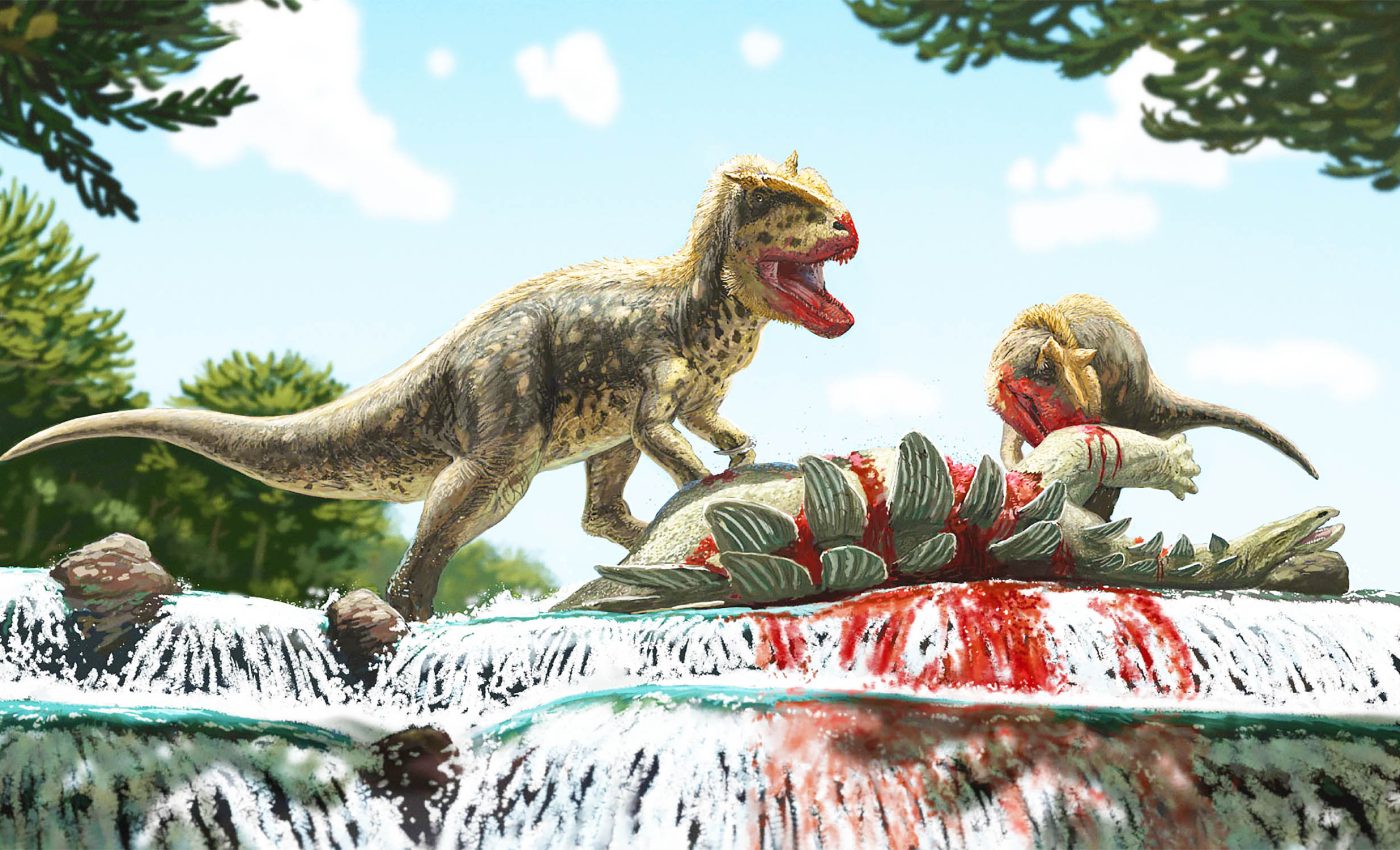
New dinosaur was a T. rex cousin and has a protruding 'eyebrow'
In the fascinating world of dinosaurs, theropods from the Mesozoic Era hold a special place. These large creatures, predecessors of modern birds, are comparable to the predatory beasts of our era.
The colossal Tyrannosaurus and the fierce Allosaurus are much like the lions and tigers of our time. Just as lions are primarily found in Africa and tigers are exclusive to Asia, theropods also had their niches.
For instance, Allosaurus resided mainly in North America and southwest Europe during the Jurassic period, while Asia saw the evolution of the large but less familiar Metriacanthosaurs.
Alpkarakush kyrgyzicus
However, a piece of the evolutionary puzzle has been missing. No large Jurassic predatory dinosaurs were previously known from the vast area between central Europe and East Asia.
Now, a study from Staatliche Naturwissenschaftliche Sammlungen Bayerns (SNSB) details the discovery of a new theropod dinosaur in the rocky desert region near Tashkumyr in western Kyrgyzstan.

Named Alpkarakush kyrgyzicus, this dinosaur is the first of its kind to be discovered in the country. The initial remains of the fossil were found quite a while back, in 2006, by Kyrgyz palaeontologist Aizek Bakirov.
However, the years that followed witnessed several excavation campaigns.
The digs uncovered skull bones, dorsal and pelvic vertebrae, fragments of the shoulder girdle and forelimbs, and almost the entire pelvic girdle and hind limbs of a predator measuring eight to nine meters in length.
The findings were traced back to the Middle Jurassic period, approximately 165 million years ago.
Unique features of Alpkarakush kyrgyzicus
What sets Alpkarakush kyrgyzicus apart are its unique, unexplored characteristics.
One such attribute is an impressively protruding “eyebrow” on the postorbital bone, pointing to the existence of a horn at that location. Other distinguishing features were discovered on the dorsal vertebrae and the femur.
After comparisons with several other theropod dinosaurs, it was determined that Alpkarakush kyrgyzicus belongs to the Metriacanthosauridae family, relatives of the large predatory dinosaurs of East Asia.
“Although the affiliation of Alpkarakush with the metriacanthosaurids is not necessarily a surprise, this discovery closes a huge gap in our knowledge of the Jurassic theropods,” said study lead author Professor Oliver Rauhut.
The research has enhanced our understanding of the evolution and biogeography of theropods. The discovery site also yielded the remains of a second, slightly smaller specimen of Alpkarakush kyrgyzicus.
An investigation into the internal bone structure revealed that the larger specimen was almost an adult, at least seventeen years old and sexually mature, while the smaller one was a juvenile, hinting at a possible scenario of a parent dinosaur roaming with its offspring 165 million years ago.
Digital revolution in dinosaur research
Digital photogrammetric 3D models of all pertinent bones have been generated and made available online for further research and 3D printing.
This provides a valuable resource for researchers worldwide, noted Dr. Oliver Wings, director of the Bamberg Natural History Museum.

The species is named after Alpkarakush, a giant bird from the Kyrgyz “Manas” epic, and the species name “kyrgyzicus” honors its origin. The first original dinosaur skeleton will be exhibited in Kyrgyzstan, which is bound to attract global attention.
Shedding light on Jurassic ecosystems
The discovery of Alpkarakush kyrgyzicus offers invaluable insights into the Jurassic ecosystems of Central Asia.
As a top predator, this dinosaur would have played a crucial role in the food chain, influencing the populations of herbivorous dinosaurs and other species in its environment.
Its presence fills a significant gap in our understanding of the distribution and evolution of theropods during the Jurassic period, highlighting the diversity of life that existed across different regions.
By studying Alpkarakush kyrgyzicus and its adaptations, paleontologists can better understand the ecological dynamics and biogeographical patterns of the time, shedding light on how these ancient ecosystems functioned and evolved.
The paleontological feat was a collaborative effort of the M.M. Adyshev Institute of Geology of the National Academy of Sciences of the Kyrgyz Republic, the Bavarian Natural History Collections, and the Friedenstein Foundation Gotha.
Supported by the German Research Foundation, the research highlights the significant strides made in the field of paleontology and geology.
The study is published in the journal Zoological Journal of the Linnean Society.
—–
Like what you read? Subscribe to our newsletter for engaging articles, exclusive content, and the latest updates.
Check us out on EarthSnap, a free app brought to you by Eric Ralls and Earth.com.
—–













